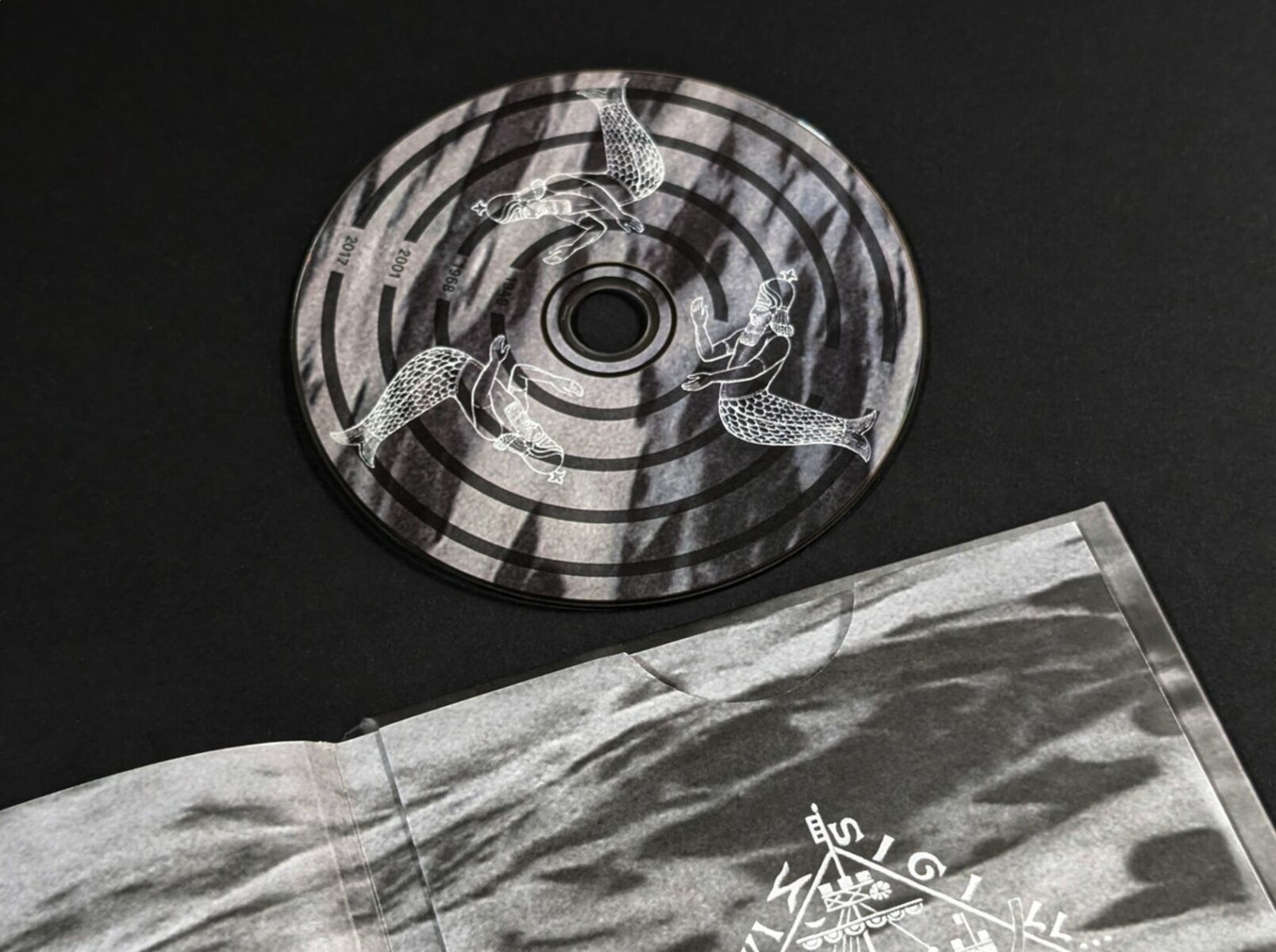Text by Mila Azimonti
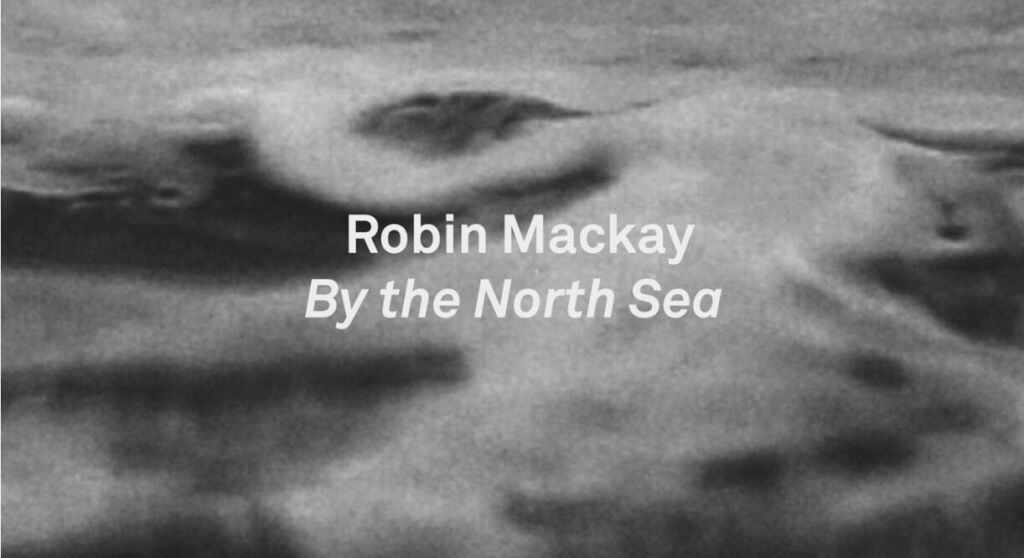
What if audio essays had the power to transport and transform us? What if they could carry us through shifting temporalities, unveiling pathways to unearth buried and ancestral memories? Could they facilitate transcendental experiences that disclose deeper layers of meaning about our reality and our very selves?
Think of a sociological essay written in the form of a novel, but you only have musical notes at your disposal. Jean-Luc Godard’s words, though not specifically referring to audio essays, perfectly encapsulate the essence of this hybrid artistic format—a still-unfolding space where voice, sound collage and music intertwine to delineate new sensory terrains and ignite speculative thought. Audio essays inhabit a liminal space between musical abstraction, argument, narrative, and sonic world-building. They force the listener to enter a distinctive mode of attention that oscillates between intense focus and deep immersion in soundscapes—an experience absent from seemingly similar formats like podcasts, mixtapes or radio shows, which often demand a more passive engagement. Nor is it found in traditional essay formats, which typically fall short of transporting us. Their analytical approach clings to an “objective” discourse that strives to maintain emotional distance [1].
Philosopher Maya B. Kronic, Head of Research and Development at Urbanomic, recognizes a unique affinity between abstract conceptual work and sound: “Audio essays tend to move fluidly between registers—personal experiences, the history of a real geographical place, the speculative versions of that place, its literary associations, the web of economic and political forces in which it’s enmeshed, and so on. This is somehow facilitated by the suspension of the text—in the form of a voice—in movements of abstract sonic matter.”
While audio essays share much in common with their video counterparts, the visual format comes with inherent limitations. Hyperdub boss Steve Goodman (Kode9) remarks how, when it comes to world-building, “sonic—as opposed to visual—architecture is much less restricted by physics.” Visual inputs usually anchor the audience in a concrete physical space, which can stifle abstraction. This is not to say that these limitations cannot be transcended (Tarkovsky’s Solaris is one example), but doing so requires considerable skill and inventive techniques to navigate the constraints of the visual medium without veering into cringe-worthy or overly “dreamlike” territory. In contrast, audio essays naturally lend themselves to seamless navigation between the abstract and the tangible, presence and absence, immersion and focus.
So, what is the true potential of this still underexplored medium? What is its value in contemporary culture and society? Sonic Faction (Urbanomic 2024) stands out as one of the first attempts to focus exclusively on the audio essay as both a medium and a method, seeking to provide an open, indefinite answer to these questions. Born from a series of gatherings aimed at facilitating collective listening and inspiring meaningful dialogue, the book—edited by Maya B. Kronic, Justin Barton, and Steve Goodman—presents a brilliant collection of essays, interviews, and transcribed conversations with various artists and writers, each revealing different directions and possibilities. While the book features a wide range of audio essays, the initial discussion centres on three releases from Flatlines, Hyperdub’s sub-label dedicated to this format. This article explores Kronic’s [2] most recent contribution, By the North Sea (Flatlines 2024).

By The North Sea
While Kronic began working on By the North Sea shortly after Mark Fisher’s passing in 2017, the audio-essay finds its roots in an ambitious, though ultimately unrealised, film project the two started back in 2001: The Dunwich Project. The idea was to make a “hyperstitional documentary” [3] about the mythologised coastal town of Dunwich—a place reminiscent of Lovecraftian horror, historically infamous for being gradually swallowed by the North Sea. Once a bustling port and trading centre, Dunwich now feels less like a decaying town and more like a place that has entirely slipped from existence. With its handful of corroded ruins, a solitary pub, a modest local history museum, and a few scattered homes sheltering its roughly 100 residents, Dunwich radiates a sense of perfect desolation. Legend has it that on certain days, you can hear the distant tolling of submerged church bells–a haunting echo buried beneath the waves.
Kronic recalls starting The Dunwich Project a few years after CCRU disintegrated. “That period marked us both indelibly, and in later years, it was hard not to measure reality against it. I think for both of us, there was a hope of somehow returning to the kind of creative ferment that had characterised those times. Something was missing.”
Alas, the dark, isolating forces that engulfed both Fisher and Kronic over the years plagued The Dunwich Project with endless delays and their friendship with perpetually postponed plans to reconnect. “For me anyway,” Kronic admits, “there had always been this latent hope and expectation of working together in future, because the end of CCRU had left so much undone.” While the profound shock of Mark’s death appeared to bring a definitive end to that hope, it also meant The Dunwich Project became a focal point for Kronic, “a way to enter into the perplexity of the fact that the unfinished could now never be finished. I returned to the project immediately, and in returning, I began to understand that the original project had been an attempt at return and that both of us were also returning to Dunwich, a place we had visited as children. Over the six years I worked on it, By the North Sea became saturated by these movements of return, recovery, and recursion, and my trying to understand what it meant for something to end. Or rather, my refusing the end.”
A cryptic line resonates from the start of By the North Sea: “There’s less to fear from the acuteness of loss than from the loss of acuteness: you try to put down markers.” So it is. Over time, for the dead, pain softens, suffering gradually ceases, and even memory begins to fade. And yet, the living, almost unknowingly, endure a sentimental impoverishment as they readjust to a reality that appears, at least on the surface, to remain intact. In defiance of the biologically imposed and obscene diktat of forgetting, By the North Sea becomes “an attempt to make the perplexity and the pain resonate,” an anchor to the piercing lucidity of that moment of loss. The piece, Kronic insists, isn’t about Mark, nor is it mired in nostalgia. It’s not a work of mourning or commemoration; it’s a work with Mark, one that seeks to reopen old wounds, reconnect with their intensity, and make something happen again. It’s a work about the creative force of haunting spectres.
While “a lot of the music that was placed under the ‘hauntological’ banner is, despite its protestations to the contrary, simply nostalgic,” Kronic notes, “the notion of hauntology is very rich. It involves latent potentials, spectres, ghosts, virtualities that have not yet been actualised but which may nevertheless exert a force on reality. We know that ghosts only return when there is unfinished business, and the piece is about abiding with and trusting that insistence of the virtual, of the unfinished and the undone. And there is a connection to place, too.
Think of the phrase ‘returning to an old haunt’: sometimes in order to access someone or something that is not present, maybe even a prior version of ourselves, we go to a particular place, walk it, circle around it. In By the North Sea the actual place Dunwich works as a kind of ritual site from which a host of these spectres can be invoked, including Mark himself. And that’s especially powerful with Dunwich because, of course, in a literal sense, there is nothing there. But it is a nexus of associations, archives, and ghosts.” By the North Sea was conceived to conjure a version of something that can never be fully realized—only “definitively unfinished.”
Ultimately, By the North Sea is a reflection on time as something open and chaotic, where nothing entirely passes but remains in constant flux—echoing the philosophy and ‘time sorcery’ of the CCRU. “All the characters refuse to accept time as a simple chronological line from past to future,” Kronic explains, “instead, they try to discover an anomalous ‘mode of time’”—non-linear, multi-layered, where events and memories aren’t merely forgotten or lost but can, with the right methods, be accessed, reshaped, and transformed to create something entirely new. In the narration, this mode of time is referred to as the “Nemotic Tide” or “templexity” (a contraction of temporal complexity). “Psychologically, time anomalies manifest in terms of apparent coincidences, feelings of déjà vu, premonitions and dark precursors,” notes Goodman. “Awareness that the apparently relentless ‘march of time’ is scattered with these glitches, and that tuning into the veneer of ‘inevitability’ is the first step in thinking escape routes.”
In By the North Sea, the structure mirrors the theme, resisting a straightforward chronological order. Four interwoven storylines—blending elements from CCRU writings, Lovecraft’s mythos, and intimate memories—move through different temporalities, organised around what Kronic describes as “a set of concentric shells.” These timelines aren’t just different moments in time; they are “space-temporal situations” or “levels of abstraction”—ranging from concrete, personal accounts to fictional personae and abstract philosophical concepts. By the North Sea is not an easy listen. It challenges the listener to actively piece together scattered fragments, much like Kronic and the characters within the story. And while the listening experience may feel disorienting at first, by the end, even without a complete grasp of every element, we are left with a sense of the whole—a resonance between time periods, experiences, and subjects.
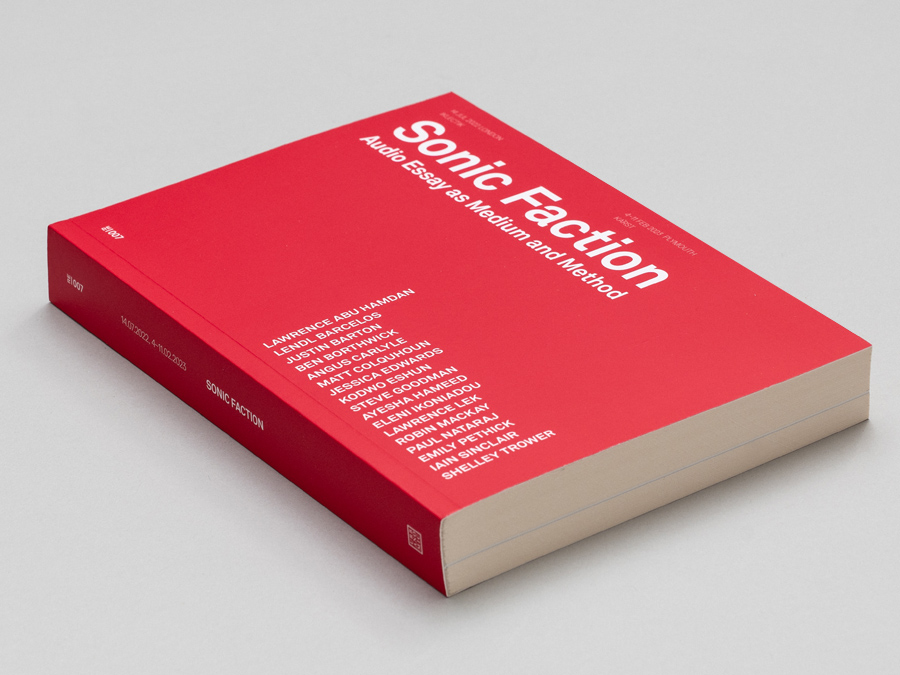
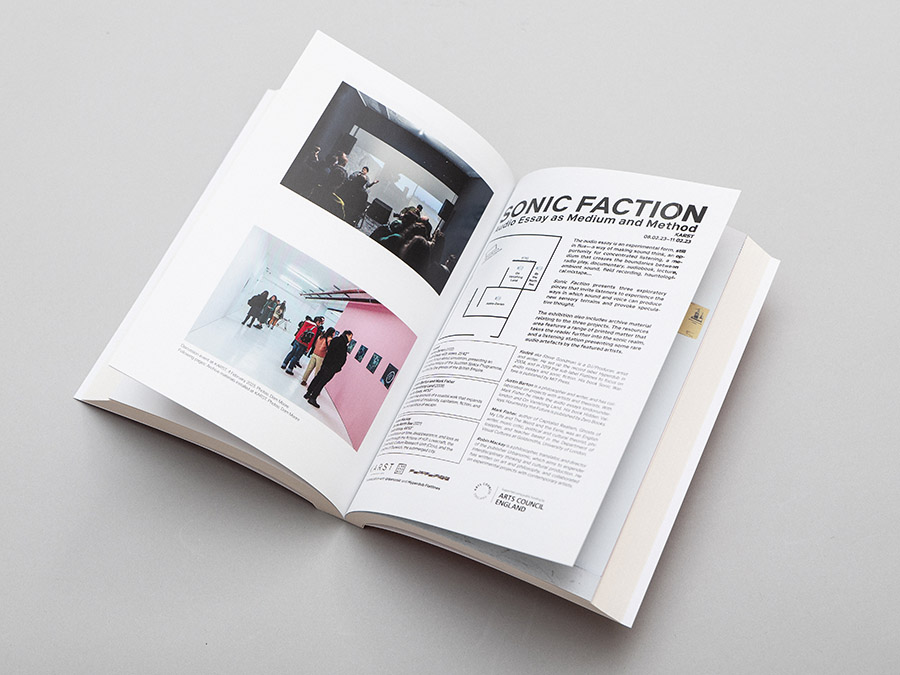
The Multiverses Of Audio Essays
In Western thought, time is mostly regarded as linear—an “arrow” moving from past to future, with events unfolding sequentially in a one-directional, ordered chain. But it wasn’t always so. In ancient times, cyclical time—rooted in Greek thought and resonating with older Eastern philosophies like Hinduism and Buddhism—dominated, portraying time as endless cycles of creation, preservation, and destruction. Then came Christianity, reframing time as a forward-moving sequence split into “before” and “after,” with Christ as the axis between history and prehistory.
This theological view laid the groundwork for the secular philosophies that came to dominate the 18th and 19th centuries, eventually culminating in Hegel. Later thinkers—Kierkegaard, Heidegger, Nietzsche, Benjamin—challenged these secularized theologies, offering theories of historical discontinuity that rejected the notion of progress toward a final purpose. Yet, even in their iconoclastic visions, with room for ruptures and unpredictability in history’s unfolding, the framework remained tethered to a sense of linearity—a relentless chronological march forward. Eschatologies stripped of teleology, so to speak.
By The North Sea also explores two distinct modes of time: attrition and cataclysm. Attrition evokes a steady winding down where nothing truly new happens—just a slow, inevitable process of decay. Cataclysmic time, on the other hand, captures the shock of a moment when something actually happens, a single event that cleaves time into “before” and “after,” reshaping everything in a new light (curiously, Fisher and Kronic’s real-life visit to Dunwich occurred just days before 9/11). In this mode, the past is obliterated; what came before no longer makes sense. Cataclysmic time hints at the possibility of novelty, though in a form that feels almost incomprehensible. Together, these modes offer contrasting experiences of linearity: attrition as a nihilistic decline and cataclysm as a sudden fragmentation of reality. Both adhere to a forward-moving structure, revealing the limitations and disorienting potential within that linear framework.
Naturally, linear time, like cyclical time, exists only by excluding the possibility of multiple temporalities—a notion dismissed by thinkers from Aristotle [4] to Kant [5], who argued that “different times are not simultaneous but successive,” mere “parts of a single time that underlies everything.” This exclusion also forms the foundation of historical temporality in both Hegelian and Marxist theory, which, despite their differences, share a vision of time as singular, linear, and staged.
Yet within the history of philosophy—or shall we say in the philosophy of history—there runs a quieter, persistent undercurrent that embraces the idea of multiple temporalities, threading through the works of thinkers from Lucretius and Machiavelli to Spinoza and Darwin. Even within Marxism, often seen as a linear philosophy with a clear trajectory, some interpretations suggest room for plural temporalities. The concept of multiple temporalities even extends beyond philosophy, reaching fields like quantum physics. In The Order of Time, Carlo Rovelli explains Einstein’s understanding of time: “There is a different time for every point in space. There isn’t just one time. There are many, many times.” In physics, the time shown by a particular clock, which measures a specific phenomenon, is known as “proper time.”
Each clock has its own proper time, and every event unfolds according to its unique proper time. Einstein’s general relativity suggests that time doesn’t govern change across the universe; rather, it describes how phenomena evolve in their respective local times and how these local times interact. “The world is not like a platoon marching to the beat of a commander,” Rovelli concludes, but “a web of events that influence each other.”A similar concept emerges in By The North Sea as ‘templexity’—a fluid, woven, and convoluted (‘plex’) fabric of time. “Templexity might best be understood as the attempt at time-travel,” explains Kronic, “a space you reach when you need to believe that everything remains accessible and can be pieced back together in ways that generate something new.”
While there’s no explicit reference to cyclical time, the idea of “returning” is crucial—more akin to a spiral than a circle, where each return to the same event produces something novel. This involves a distinction, even a tension, between the singular “event” (belonging to templexity) and its multiple “cases” (situated within linear time). Time and causality relate more to how we make sense of events and connect them together, which is why some interpretations may appear anomalous when viewed through a strictly linear lens.
The CCRU dramatizes this tension through a Marvel Comics-style ongoing battle between two opposing groups, elements of which appear in By The North Sea. On one side are the Lemurians, “involved in various exploits, escapes, and time anomalies.” Against them is the Architectonic Order of the Eschaton (AOE), “a Masonic-like secret society that insists everything in time is sewn up, orderly, and sequential—one event following another in a one-directional timeline. The AOE is involved in a perpetual labour to ensure that nothing escapes from this strict order.” Yet, despite the AOE’s insistence, the order of time and events is always contested and under construction. It’s a continual work in progress.
If societies were to undergo a cultural—or perhaps metaphysical—shift away from the prevailing models of time toward one of temporal multiplicity, audio essays could emerge as a unique form in the artistic sphere, embodying this multiplicity and serving as a platform for exploring its complexities.
Kronic gives a perfect illustration of this: “For me, By the North Sea is a kind of tool or ritual that can be used to attune myself to a broader, more lucid perspective in which the chronological event ‘Mark is no longer here’ isn’t negated but suspended, opening up a broader perspective in which it is quite evident how much that statement falls short of the richness and temporal twistedness of the real. It’s about accessing a realm in which one escapes inevitability and impossibility.”
What is the listening experience if not an interplay where imagined temporalities—those dimensions to which we are transported—and real ones—our immediate surroundings—converge and overlap? Audio essays’ complex relationship with time is also reflected in their methodology, which heavily relies on fragments sampled from diverse registers and sources. This approach, reflecting the low-budget, collage-driven style of CCRU’s early cyberpunk experiments in the 1990s (itself rooted in the sample-heavy tracks of ’90s hip-hop and jungle) inevitably results in scattered, multilayered narratives that defy chronological order. This holds true not only for By the North Sea but for most audio essays, particularly all releases from Flatlines.
Arguably, the temporal disruptions at play in audio essays stand in uneasy contrast to the medium’s linear nature—after all, listeners typically experience them through a sequential playback. This linearity poses a unique challenge: how to contain complex networks of concepts, images, and sounds within a structure that moves inexorably forward? Kronic believes that the key to a truly successful artistic piece lies in maintaining a constant tension—one embodied in the fragmentary nature of all Flatlines releases, which they describe as “the sound of it protesting against its own form.” While the narrative may move forward, the “transcendental occurrence” at stake unfolds beyond the constraints of chronological order…
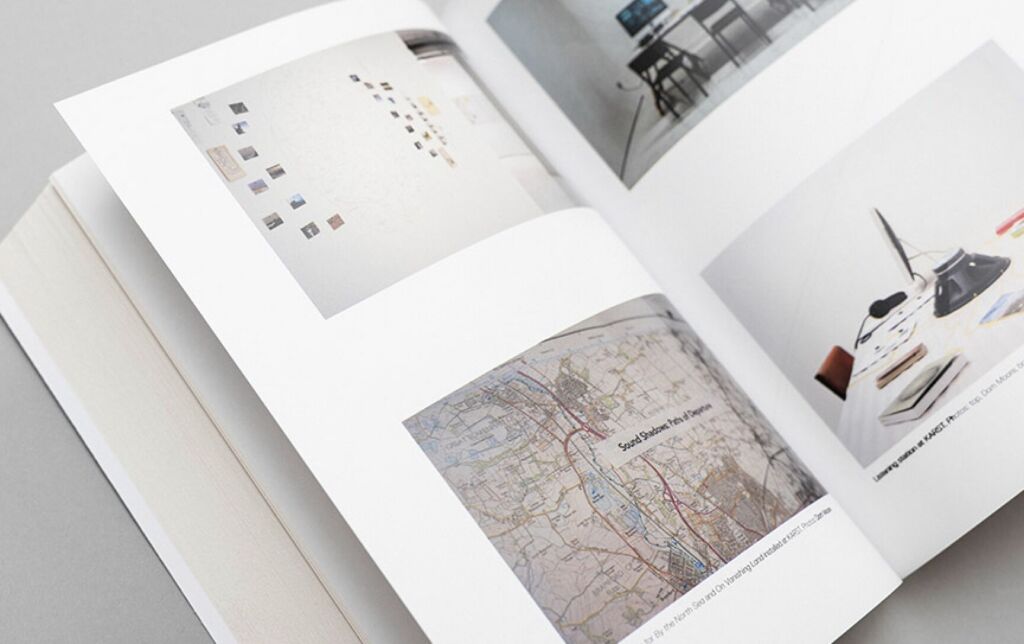
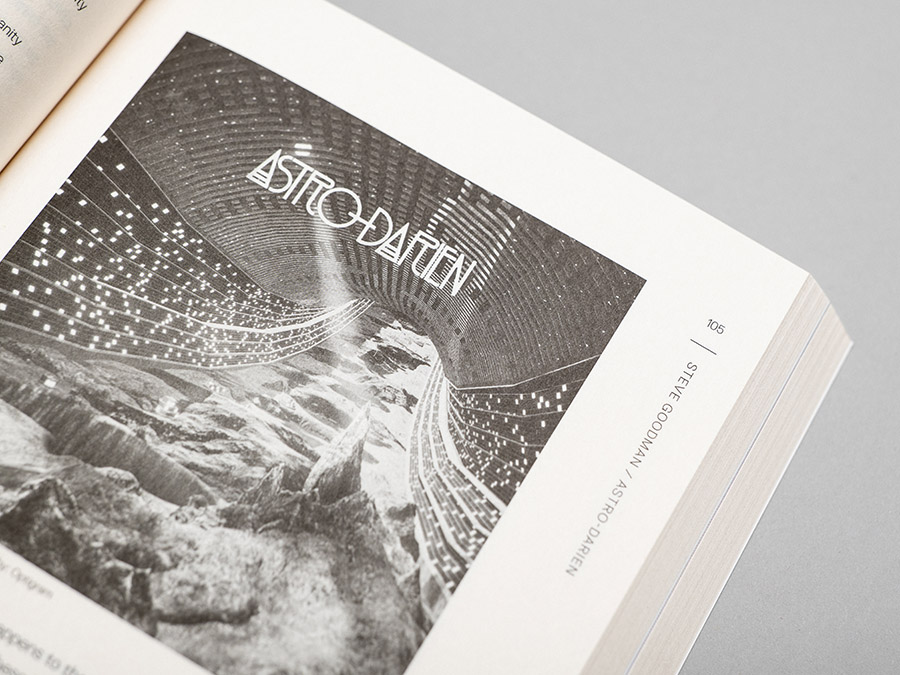
To Free Ourselves From Temporal Subjectivation – A Double Function Of Critique And Transformation
If it’s evident that the audio essay acts as an anti-linear time exercise, what does this exercise really lead to?
As Kant famously posited, time is not something we experience directly but rather a condition that makes all experience possible—it’s the framework that keeps our reality coherent. Our experience of reality, including how we perceive objects and ourselves, is thus constrained by a “temporal security system” that formats everything into a linear, chronological sequence, presenting events as happening one after another. Though it provides a sense of order, this structure can obscure the multifaceted, irregular and sometimes chaotic complexities that have emerged in modernity.
By subverting and widening this constrained spectrum of experience, audio-essays militate for a different mode of time. This shift thus serves, first and foremost, as a critique of the political-administrative systems that govern our experience of time and space, relativizing them and suspending their claims to eternal permanence. As Kronic observes, “there’s a tendency in modernity whereby all of the cyclical and mythical time structures of pre-capitalist societies have been melted down and capitalism has, beginning with the factory clock, installed a vast system of synchronisation that makes sure we are all present in the present.” Time, as the true hallmark of capitalist subjectivation, is extensively explored by Fisher in Capitalist Realism.
And yet, Kronic observes another, parallel tendency in modernity, whereby many powerful writers and thinkers “have tended to emphasise the stranger and more paradoxical side of time, focusing on the ways in which chronology is unhelpful in trying to understand the life of the subject.” Freud was among the first to suggest that we are deluded—in essence, we have no idea what we are as subjects—if we think we’re ever entirely present in the “here and now”. It’s the temporal structure we’re trapped in that makes us live under the illusion that our experience is confined to the present moment.
“In By the North Sea,” Kronic recounts, “one of the characters seems to suggest that you can find certain faultlines whereby you can exit the timeline and make anomalous crossings, disrupt the time-assembler. Ultimately, the question is, why would the AOE have to work so hard to maintain this structure if something wasn’t always threatening to escape from it? And if I am forever imprisoned in chronological time, who’s the jailor, and what exploits can I find to catch a glimpse of what’s outside?”“From a certain perspective, psychoanalysis is already doing that, it involves rewriting your own history and the order of events, it involves temporal alienation. Freud and his followers, particularly Jung and Ferenczi, had all sorts of interesting notions about phylogenetic time. They considered very seriously the idea that maybe we have inherited species-memories from our fishy ancestors.
Even in a normal psychoanalytic situation, you can arrive at a moment where you’ll say something, realise you’ve said it without knowing you were saying it, and, with the help of the analyst, cognise that it explains or interprets your personal history in a new way, changing your understanding of your past and of who you are. Who said it? A deeper self that exists beyond the constraints of time and is thus inaccessible to formatted experience? A version of you that managed, for a moment, to escape the timeline you’d been trapped in? The effects of something the speaker has voiced-without-intention are propagated into the speaker’s past, transforming their identity in the process.”
Much like psychoanalysis, audio essays engage with temporal alienation, creating pathways for anomalous crossings. Kronic suggests that audio essays can activate a latent human ability—seldom accessed—to “travel in intensity.” Intensity, they claim, always transcends the linear timeline, involving an escape from ordinary reality (which often suppresses our human faculties) into a realm of sensory exploration. In this process, distinct, self-contained realities emerge, reshaping the traveller along the way. Routes to these metamorphic journeys demand considerable effort and the creation of tools and devices—some, like trance or drugs, carrying a higher risk of ego-loss and perhaps no return. Among these tools is the audio essay. Ultimately, the underlying question echoes a timeless concern: how can we short-circuit control? How do we drain the power sources of the forces endlessly striving to maintain their grip—even those forces within ourselves?
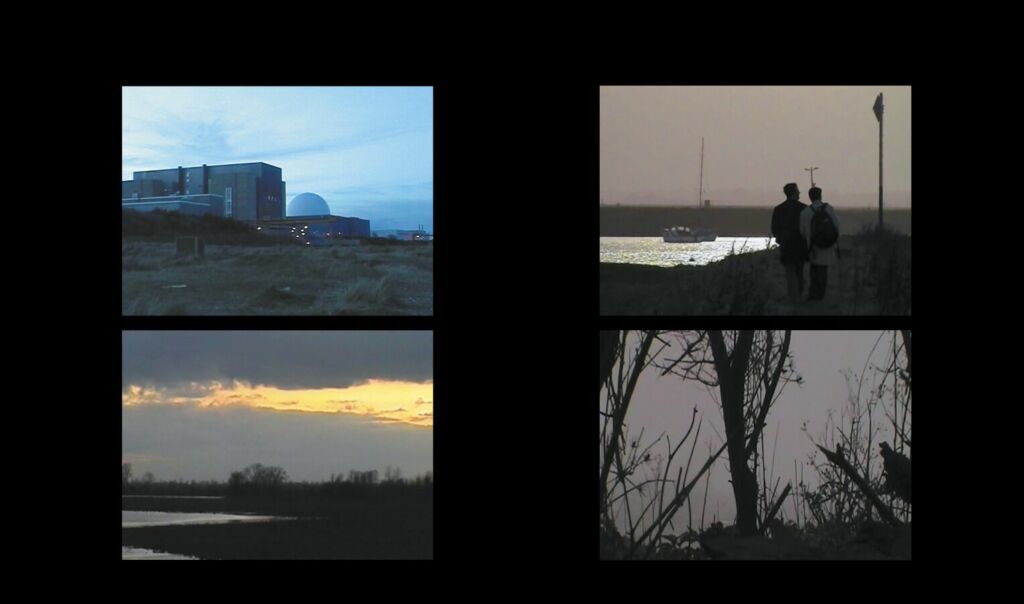
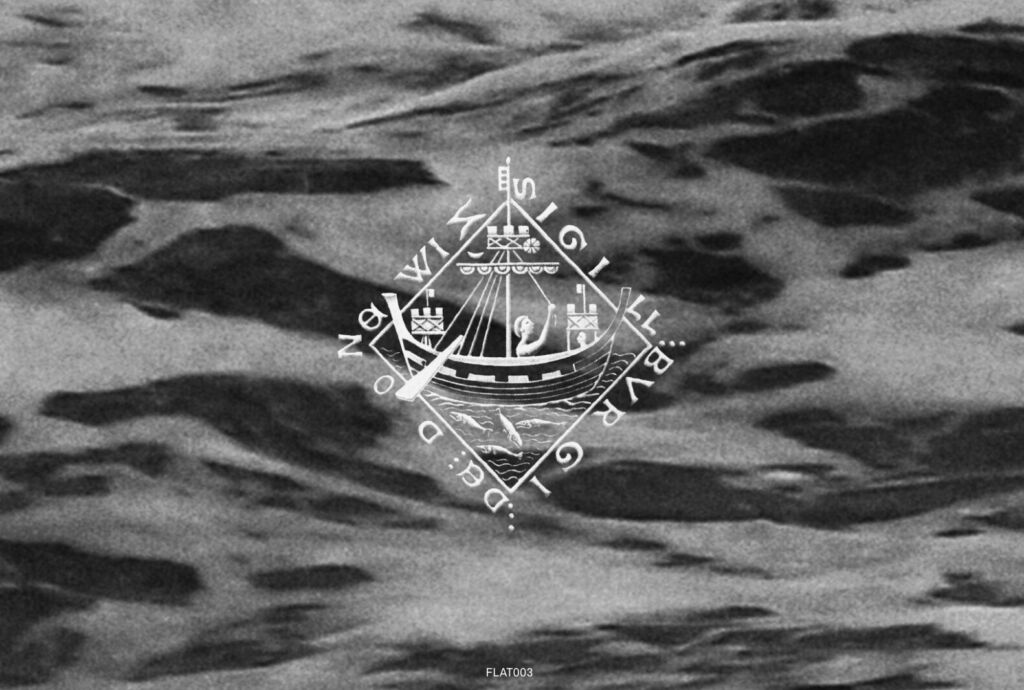
Audio essays multiverses provide crucial insights for social critique and self-transformation. However, they represent only a fraction of the possibilities explored in Sonic Faction and an even smaller share of what remains to be uncovered. While the book serves as an inspiring starting point, the discourse and experimentation surrounding this medium must continue to evolve, ensuring its place as a potent cultural tool. Perhaps one key aspect that encapsulates what audio essays can achieve is their ability to grant access to the flatline—a name far from randomly chosen by Goodman for the label.
Rather than adhering to linearity, the flatline embraces flat multiplicities—echoing William Gibson’s braindead states in cyberspace or Deleuze and Guattari’s rhizomatic vision. The flatline is an atemporal, smooth plane where “beyond the constitutive illusions of subjectivity, everything—machine and human, animate and inanimate, fact and fiction—exists and interacts on one and the same plane of reality.” It’s a realm where every conceivable connection is nurtured, every vibration of culture can be activated, restructured, and reinvented. Here is where the true essence of the label’s name reveals itself—a space of infinite potential.

